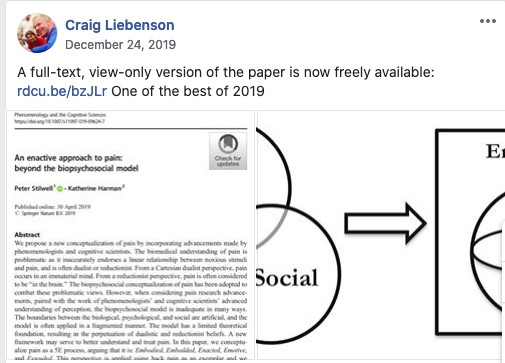An enactive approach to pain: beyond the biopsychosocial mode Considering the limitations of the pain theories presented, an enactive approach to pain was explored as an alternative big picture framework. Informed by established theory and research by phenomenologists and cognitive scientists, pain was described as: (1) Embodied, (2) Embedded, (3) Enacted, (4) Emotive, and (5) Extended. Overall, with an enactive approach, pain does not reside in a mysterious immaterial mind, nor is it entirely to be found in the blood, brain, or other bodily tissues. Instead, it is a relational and emergent process of sense-making through a lived body that is inseparable from the world that we shape and that shapes us. With this perspective the experience of pain cannot be observed or measured, and qualitative pain narrative remains the best available proxy for inferring pain in others.

#science #chiropractor #chiropractic #research #education #evidence based #patient centered #interprofessional #collaborative #rehabilitation #public health #spinal health #musculoskeletal health #ethics #pain #function #disability #QOL #knowledgetranslation


